Fluffy Pan de Mallorca Recipe: A Sweet Island Treat
Sweet aromas of butter and sugar dance through Puerto Rican kitchens when pan de mallorca emerges from warm ovens.
Spiral-shaped pastries whisper stories of colonial bakery traditions.
Soft, pillowy textures melt against your tongue with each delicate bite.
Local bakers craft these delightful rolls using simple ingredients that speak volumes about culinary heritage.
Powdered sugar dusts the surface like a gentle snowfall, creating visual magic.
Generations have treasured this beloved breakfast treat, passing recipes from grandparent to parent.
Let’s uncover the delicious secrets behind this island favorite that promises pure comfort in every incredible slice.
Pan De Mallorca That’s Soft Sweet And Special
Pan de Mallorca Dough Details
Leavening:Wet Ingredients:Dry Ingredients:Finishing:Pan de Mallorca Baking Instructions
Step 1: Awaken the Yeast
Grab a big mixing bowl and sprinkle yeast into warm water.
Watch as the mixture transforms and becomes bubbly and alive within 5 minutes.
Step 2: Blend Liquid Magic
Crack egg yolks and whisk them together with milk, sugar, and melted butter into the yeast mixture.
Stir until everything looks silky and smooth.
Step 3: Create Flour Foundation
In another bowl, combine flour and salt.
Slowly introduce the dry ingredients into the wet mixture, stirring gently with a wooden spoon until a soft dough emerges.
Step 4: Transform Dough
Move the dough onto a flour-dusted surface.
Knead the dough with your hands, feeling its texture become elastic and smooth.
Transfer to a greased bowl, cover with a soft towel, and let it rest and rise for 2 hours.
Step 5: Shape Delightful Spirals
Divide the dough into 12 equal pieces.
Roll each piece into a long, slender strip about 12 inches long.
Curl each strip into a beautiful spiral shape.
Step 6: Second Rising Adventure
Place the spiral rolls on a parchment-lined baking sheet.
Brush with melted butter and cover.
Allow them to rise and grow puffy for 45 minutes.
Step 7: Bake to Golden Perfection
Heat the oven to 350°F.
Slide the tray inside and bake until the rolls turn a gorgeous golden brown, approximately 20-30 minutes.
Step 8: Sweeten and Serve
Sprinkle a delicate layer of powdered sugar over the warm rolls.
Serve immediately and enjoy the soft, sweet goodness of Pan de Mallorca.
Mallorca Bread Tips Worth Knowing
Mallorcan Bread That Remains Soft With the Right Wrap
What Goes Well With Mallorca Bread
Mallorca Bread Topping Variants
FAQs
This sweet bread has Puerto Rican roots, originally brought by Spanish settlers and influenced by European bakery traditions, particularly from Mallorca, Spain.
It’s a soft, buttery roll with a delicate, slightly sweet interior and a light, fluffy texture that melts in your mouth.
Absolutely! You can mix and knead the dough by hand using a wooden spoon and your own arm strength, which many traditional bakers still prefer.
Proofing is crucial because it allows the yeast to develop flavor and helps create the signature soft, airy texture of the rolls by allowing the dough to rise properly.
Print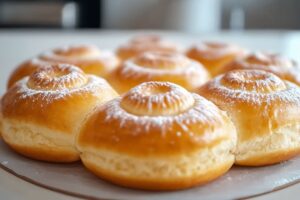
Pan de Mallorca Recipe
- Total Time: 2 hours 20 minutes
- Yield: 12 1x
Description
Sweet Puerto Rican pan de mallorca spirals with buttery, sugar-dusted magic, creating a heavenly breakfast pastry that melts effortlessly on your palate. Delicate spirals invite you to savor this classic island treat that whispers comfort and culinary tradition.
Ingredients
Main Ingredients:
- 5 cups bread flour (or all-purpose flour)
- 8 egg yolks
- 1 cup melted butter
Liquid Ingredients:
- 1/2 cup warm water
- 1/2 cup whole milk
Additional Ingredients:
- 1 tablespoon active dry yeast
- 1/2 cup white granulated sugar
- 1 teaspoon salt
- 2 tablespoons melted butter (for brushing)
- 1/4 cup powdered sugar (for dusting)
Instructions
- Awaken the yeast by dissolving it in tepid water within a spacious mixing vessel, allowing it to bloom and become frothy for approximately 5 minutes.
- Incorporate milk, vibrant egg yolks, granulated sweetener, and liquefied butter into the activated yeast, whisking thoroughly until the mixture achieves a uniform consistency.
- Create a separate mixture of flour and sodium chloride, then methodically integrate these dry components into the liquid base, blending with a wooden utensil until a cohesive dough emerges.
- Transfer the nascent dough onto a lightly dusted work surface, kneading with purposeful motions to develop gluten structure and elasticity.
- Nestle the dough into a generously greased container, drape with a soft cloth, and permit it to expand and mature in a warm environment for two hours, allowing its volume to substantially increase.
- Partition the dough into twelve symmetrical segments, rolling each portion into elongated strips approximately 12 inches in length.
- Transform each strip into a graceful spiral configuration, positioning the delicate coils onto a parchment-lined baking sheet.
- Delicately brush the spiraled dough with additional melted butter, then allow a secondary fermentation period of 45 minutes to enhance volume and texture.
- Calibrate the oven to 350°F, then carefully position the prepared rolls, baking until they acquire a golden, luminous exterior.
- Once removed from the oven, generously dust the warm rolls with a veil of powdered sugar, creating an enticing presentation ready for immediate enjoyment.
Notes
- Activate yeast properly by using water between 100-110°F to ensure proper fermentation without killing the yeast.
- Knead dough gently but thoroughly to develop gluten structure, which creates soft and airy texture in final rolls.
- For gluten-free variation, substitute wheat flour with a blend of gluten-free flour and add xanthan gum for better binding.
- Make ahead-friendly by preparing dough night before, refrigerating overnight, and allowing slow rise for enhanced flavor development.
- Prep Time: 2 hours
- Cook Time: 20 minutes
- Category: Breakfast, Snacks
- Method: Baking
- Cuisine: Puerto Rican
Nutrition
- Serving Size: 12
- Calories: 322
- Sugar: 16 g
- Sodium: 135 mg
- Fat: 20 g
- Saturated Fat: 12 g
- Unsaturated Fat: 8 g
- Trans Fat: 0 g
- Carbohydrates: 30 g
- Fiber: 1 g
- Protein: 5 g
- Cholesterol: 210 mg

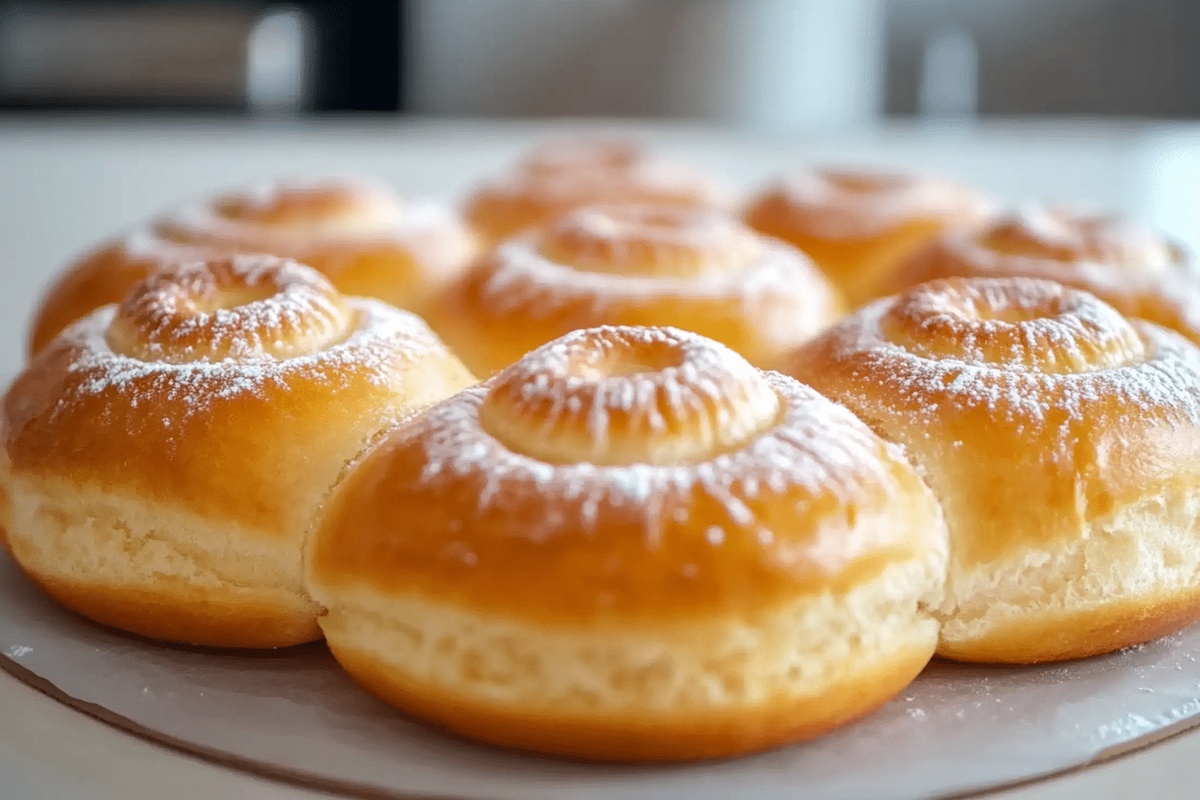
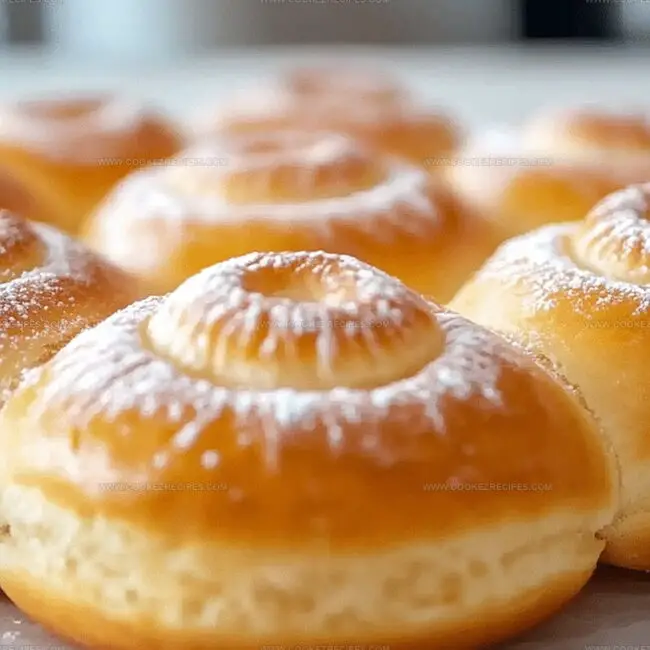
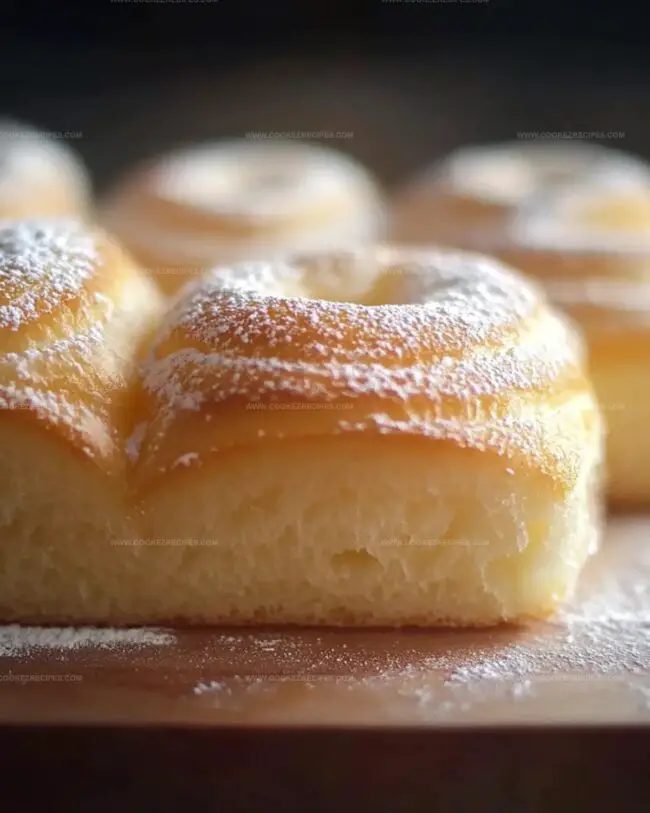
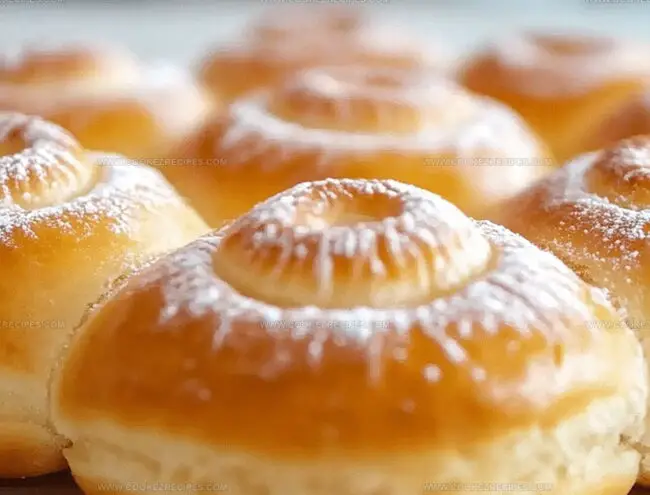
Daniel Bruns
Founder & Culinary Innovator
Expertise
Recipe development for home cooks, Nutritional analysis and meal planning, Culinary education and food writing
Education
Auguste Escoffier School of Culinary Arts
Diploma in Culinary Arts and Operations
Focus: Classical and contemporary cooking techniques, Culinary entrepreneurship and kitchen management, Menu development and food cost analysis
Daniel’s story started with flour on his face and a pie in the oven at his grandma’s house. He later sharpened his skills at the Auguste Escoffier School of Culinary Arts.
His goal? Recipes so simple you’ll want to cook every night. When he’s not whipping up one-pan wonders, Daniel’s outside picking herbs, hosting neighborhood cook-offs, or baking chocolate cakes with his kids, messy, sweet, and unforgettable.